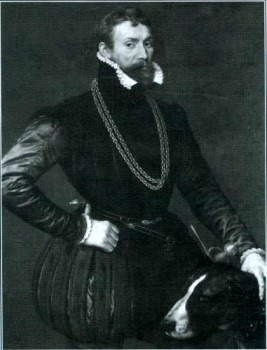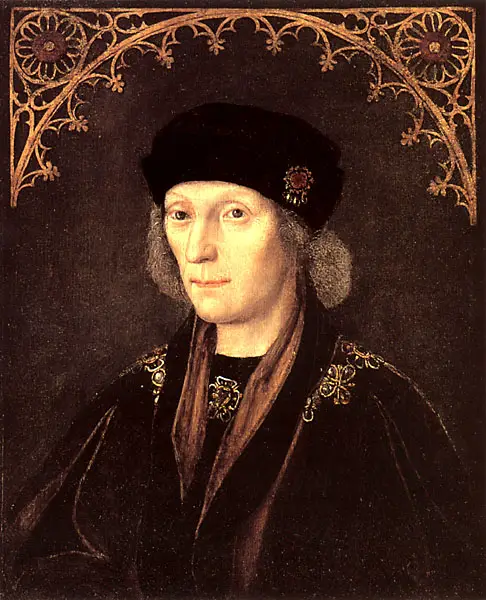In today's Claire Chats I look at the evidence regarding Henry VIII's claims that Anne of Cleves was unattractive and the origin of the "Flanders Mare" label.
Sources
- Cromwell's letter to the king concerning his marriage with Anne of Cleves, reproduced in Burnet's The History of the Reformation, Vol 1: Pt 3. p305.
- "Ill smells" or "evil smells" comment from Burnet's The History of the Reformation, Vol I, p436-7.
- Deposition of Sir Anthony Browne, Strype's Ecclesiastical Memorials, Volume I Part II, p456-7.
- Marillac's description of Anne of Cleves is in Letters and Papers, Foreign and Domestic, Henry VIII, Volume 15, 23. In another letter, this time to Francis I, he writes "She looks about 30 years of age, tall and thin, of medium beauty, and of very assured and resolute countenance. She brought 12 or 15 ladies of honour clothed like herself—a thing which looks strange to many." LP xv. 22.
- Deposition of Dr William Butts, reproduced in Strype's Ecclesiastical Memorials, Volume I Part II, p461-62.




The following link will take you to the portrait of Christina of Denmark in London’s National Gallery so you can compare Anna & Christina for looks. I think they are not dissimilar. https://commons.wikimedia.org/wiki/File:Christina_of_Denmark,_Duchess_of_Milan.jpg and we should remember that Holbein was known for his ‘lively’ likenesses ie true to life portrayals of his sitters, so we can use the evidence of our own eyes to judge whether the lady of Cleves is attractive or not. However, beauty is in the eye of the beholder and Henry was the one doing the important ‘beholding’, so no wonder all his men gave unfavourable depositions about her when Henry wanted out of the marriage.
I don’t think Anne was ugly at all, but I feel that perhaps her apparel certainly didn’t do anything for her. Someone put a picture of who she thought may have been Anne in English dress, if it is her, the English dress made her look younger, and softer looking if that makes sense.
Anne couldn’t be considered a beauty, but she is very pleasing in appearence. I do think that Holbien may have been a little free with his brush, but maybe in the sense of trying to soften the look of her dress, rather than her.
I think Anna is rather ‘sweet’.
Lorna, if you know the work of Lucas Cranach, then you will see that she is dressed in the fashion of her part of the world for the period. It would not have been worth Holbein’s job to do anything other than portray her as she was. Why would he when he would be found out the minute the king clapped eyes on her and so jeopardise his position as an artisan artist at the English court, which was pretty lucrative.
Yes I agree, but what I meant by softening down her dress was from the colour point of view. If my lousy memory serves Henry liked the milk white and roses complection in woman, and it could well be that the colours in Anne’s dress hid her true beauty if that make sense.
Holbien certainly wouldn’t have been labeled the “Royal Painter” if he had painted anything other than what he saw.
Claire, this is a great chat full of information! Beyond perhaps some pockmarks, there is no reason to believe that Holbein’s portraits of the 24-year-old Anna are anything less than accurate. She was also blonde, although frequently portrayed in popular culture as a brunette. Interestingly, her elder sister, Sybilla, was a famous beauty and the sketch we have of her younger sister shows Amelia to be attractive, as well. Perhaps Anna did not suit English tastes well. Another thing that makes me wonder is that Anna is the only one of Henry’s wives whom he did not have the opportunity to interact with before deciding to marry.
Good point, it was a gamble that didn’t pay off as Cromwell hoped. Maybe if Anne had come to England and perhaps spent time in the English court before her marriage, things might have been a little different. Certainly from the point of view that she and Henry became quite good friends after his divorce from her. I do feel that if he had given his marriage a chance with her it may well have been successful. Love would not have exactly blossomed from it, but mutual respect may well have, and Anne would have done her duty. I doubt a child may have come from their union as our “enry was probably shooting blanks by this time, but stranger things have happened, especially when it come to our “enry. I think Anne would have found a very effective way of dealing with “enry’s temper tantrum and oddities pragmatically and with diplomactic tact.
Something has always bother me about Henry’s reason for divorcing Anne. The way I have understood it, Henry or rather Cromwell at Henry’s insistence, stated the the marriage contract between Anne and Francis Duke of Lorraine hadn’t been formally dissolved so therefore Anne’s present union with Henry was null and void. Anne maintained that he had been dissolved and therefore was Henry’s lawful wife. When the big hue and cry was over we all know that Anne did rather well out of the whole sorry affair.
Cromwell got careless and lost his head, but that was a mere bagatelle.
Anyway if we believe that this contract was still legally binding,surely when Francis Duke of Lorraine married Christina of Milan, surely this union would also be null and void?
There seem to me at least something of a farce in the whole thing, and perhaps a little bit of amusement too. Christina who insulted Henry with the old “two heads” slur turning around and then marrying the very person that Henry believed Anne was still precontracted too…
Tudor Titbit Christina became the lover of King Philip of Spain, who as we know was the De Jure King of England from his marriage to Mary Tudor.
There is no independent evidence that can show Anne of Cleves as ugly. On the contrary experts say Hans Holbein was very accurate and he dare not be anything else as seeing a portrait was how you decided if you liked a bride or bridegroom as you couldn’t meet them and take them out. A portrait had to be as accurate as possible and Holbein’s reputation would have been destroyed if he had cheated with Anna’s portrait. Anna was suggested as a bride earlier for Henry and the League had been trying to get into England for a decade. Cleves was the main territory in a collection of four or five which formed the Duchies inherited by William the Rich, he was not abusive to his sisters as in fiction, but was in charge of a political power house courted by the best houses in northern Europe. It was a wealthy and forward thinking collection of towns and it saw the Northern Renaissance in the fifteenth and sixteenth centuries. Anna was also a Catholic, even if her younger brother was a Protestant and was described as fair, generous, kind, compassionate and friendly. She may have had a sheltered upbringing but she was not ignorant and she adapted well to English court life. All we have for evidence is a moaning obese, overly large King with a temper and paranoid mania, who wanted out of a marriage and couldn’t get his own way for once. Henry made up his mind to make this marriage fail as he was forced to go through with it, despite attempts to stop it at the last moment. He was put off by Anne because she didn’t see through his daft disguise and then he couldn’t bring himself to consummate this marriage. Henry would say anything to make Anne look bad and get his marriage annulled, but much must be taken with a political pinch of salt. Henry didn’t say Anne was a Flanders Mare and he liked her well enough after the marriage ended, was very generous and Anne showed good common sense in coming to terms with Henry. She was free to remain in England and to remarry if she wished. William was pacified because Anne was told to write that she was well treated and content. She was given several houses and palaces and an annual income. Anne remained on good terms with Henry’s children, received regular visits from his daughters and Henry himself and was buried in Westminster Abbey on the orders of Queen Mary I.